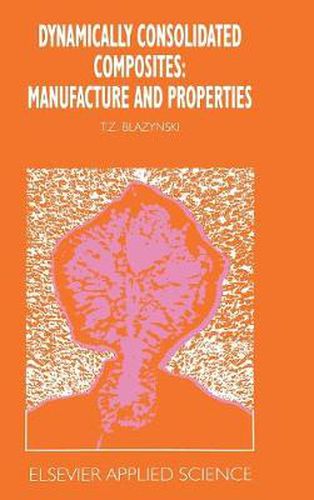Readings Newsletter
Become a Readings Member to make your shopping experience even easier.
Sign in or sign up for free!
You’re not far away from qualifying for FREE standard shipping within Australia
You’ve qualified for FREE standard shipping within Australia
The cart is loading…






This title is printed to order. This book may have been self-published. If so, we cannot guarantee the quality of the content. In the main most books will have gone through the editing process however some may not. We therefore suggest that you be aware of this before ordering this book. If in doubt check either the author or publisher’s details as we are unable to accept any returns unless they are faulty. Please contact us if you have any questions.
New composite materials and semi-fabricates, as disparate in their nature as solid multilaminates and powder compacts, have been steadily increasing in importance. Their application to a variety of industrial situations is being made easier by the considerable development of conventional manufacturing techniques which fulfil many of the requirements imposed on such materials. At the same time, however, the degree of their exploitation can be limited by, either the inadequate final product properties, or simply - as in the case of particulate matter - by the inability of these techniques to produce significant quantities of the composite. For these reasons, combined with the ever increasing demand for highly sophisticated composites, attention has been focused on the dynamic manufacturing methods. Not only do they extend the range of the available routes, but they also offer the possibility of achieving chemical and/or structural syntheses of new materials from either the elemental or complex constituents. What is more, these techniques often tend to ensure integral bonding of the elements of the structure and they thus enhance the mechanical properties of the composite.
$9.00 standard shipping within Australia
FREE standard shipping within Australia for orders over $100.00
Express & International shipping calculated at checkout
This title is printed to order. This book may have been self-published. If so, we cannot guarantee the quality of the content. In the main most books will have gone through the editing process however some may not. We therefore suggest that you be aware of this before ordering this book. If in doubt check either the author or publisher’s details as we are unable to accept any returns unless they are faulty. Please contact us if you have any questions.
New composite materials and semi-fabricates, as disparate in their nature as solid multilaminates and powder compacts, have been steadily increasing in importance. Their application to a variety of industrial situations is being made easier by the considerable development of conventional manufacturing techniques which fulfil many of the requirements imposed on such materials. At the same time, however, the degree of their exploitation can be limited by, either the inadequate final product properties, or simply - as in the case of particulate matter - by the inability of these techniques to produce significant quantities of the composite. For these reasons, combined with the ever increasing demand for highly sophisticated composites, attention has been focused on the dynamic manufacturing methods. Not only do they extend the range of the available routes, but they also offer the possibility of achieving chemical and/or structural syntheses of new materials from either the elemental or complex constituents. What is more, these techniques often tend to ensure integral bonding of the elements of the structure and they thus enhance the mechanical properties of the composite.